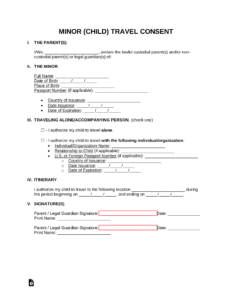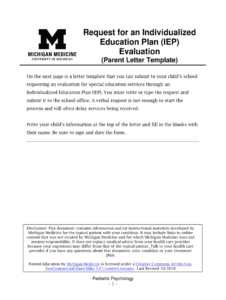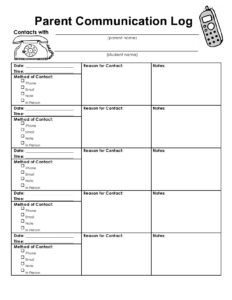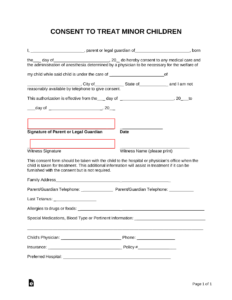Submitting a structured written request offers several advantages. It provides a clear and organized way to communicate concerns, ensuring all pertinent information is conveyed effectively. This formal approach initiates a legally mandated timeline for the school to respond and conduct evaluations, safeguarding the child’s right to timely assessment. A well-crafted request can also serve as valuable documentation for families, creating a record of their advocacy and facilitating communication with the school throughout the evaluation process.
This article will delve deeper into the essential components of such a request, offer guidance on crafting a compelling and comprehensive document, and explore the subsequent steps in the special education evaluation process.
Key Components of a Request for Evaluation
A comprehensive request for evaluation ensures clarity and facilitates the assessment process. Several key elements contribute to a well-crafted document.
1. Child Identification: Clear identification of the student is essential. This includes the student’s full legal name, date of birth, grade level, and student identification number.
2. Parent/Guardian Information: Contact information for the parent or legal guardian submitting the request is necessary. This should include full names, addresses, phone numbers, and email addresses.
3. Detailed Description of Concerns: Specific observations regarding the child’s academic, social-emotional, or behavioral challenges should be articulated. Providing concrete examples and anecdotal evidence strengthens the request. Quantifiable data, such as grades or test scores, can also be included.
4. Relevant Background Information: Previous interventions, assessments, or diagnoses relevant to the child’s learning or development should be documented. This information provides valuable context for the evaluation team.
5. Areas of Suspected Disability: While a formal diagnosis is not required, indicating the suspected areas of disability helps focus the evaluation process. This might include specific learning disabilities, speech or language impairments, or other developmental delays.
6. Request for Specific Assessments: Parents can request specific assessments they believe are necessary to fully understand the child’s needs. This demonstrates proactive engagement in the process.
7. Date and Signature: Including the date and signature of the parent/guardian formalizes the request and initiates the timeline for the school’s response.
Providing comprehensive information ensures the evaluation team has a complete understanding of the child’s needs and can develop an appropriate assessment plan. A well-structured request facilitates a timely and effective evaluation process, leading to appropriate supports and interventions.
How to Create a Request for Special Education Evaluation
Creating a well-structured request is essential for initiating the special education evaluation process. The following steps offer guidance for developing a comprehensive and effective document.
1. Gather Necessary Information: Compile relevant information about the student, including full legal name, date of birth, student ID, grade level, and current educational setting. Collect parent/guardian contact information, including full names, addresses, phone numbers, and email addresses.
2. Clearly State the Request: Begin the document by explicitly stating the purpose: to request a full and individual evaluation to determine eligibility for special education services.
3. Describe Specific Concerns: Detail observations regarding academic, social-emotional, or behavioral challenges. Include specific examples, anecdotal evidence, and any available quantitative data. Focus on observable behaviors and their impact on the student’s educational progress.
4. Provide Relevant Background: Document previous interventions, assessments, medical or psychological diagnoses, and any relevant family history. This context helps the evaluation team understand the student’s developmental trajectory.
5. Note Suspected Areas of Disability (Optional): While a diagnosis is not required, indicating suspected areas of disability can help focus the evaluation. This may include learning disabilities, speech/language impairments, autism spectrum disorder, or other developmental delays.
6. Request Specific Assessments (Optional): Parents may request specific assessments they deem necessary. This proactive approach allows for input regarding relevant evaluation methods.
7. Maintain a Professional Tone: Use clear, concise, and objective language. Focus on factual information and avoid emotional language or accusations.
8. Proofread and Sign: Carefully review the document for accuracy and completeness. Include the date and signature of the parent/guardian to formalize the request.
A comprehensive and well-organized request facilitates a timely and effective evaluation. Accurate information and clear communication ensure the evaluation team has a thorough understanding of the student’s needs, leading to appropriate supports and interventions.
Accessing appropriate educational supports begins with a formal, written request for evaluation. This process ensures a comprehensive review of a child’s learning profile, addressing specific needs and fostering academic growth. Understanding the essential components, such as detailed descriptions of concerns, relevant background information, and potential areas of disability, empowers families to effectively advocate for their children. Utilizing available resources and maintaining clear communication with the school throughout the evaluation process remains crucial for securing appropriate interventions and fostering a supportive learning environment.
Effective advocacy, supported by a well-crafted request for evaluation, serves as a cornerstone for ensuring students receive the individualized support necessary to thrive academically and reach their full potential. Timely intervention, initiated by parental action, paves the way for a more equitable and successful educational journey for students with diverse learning needs. This process underscores the vital partnership between families and schools in fostering a supportive and inclusive educational system.



